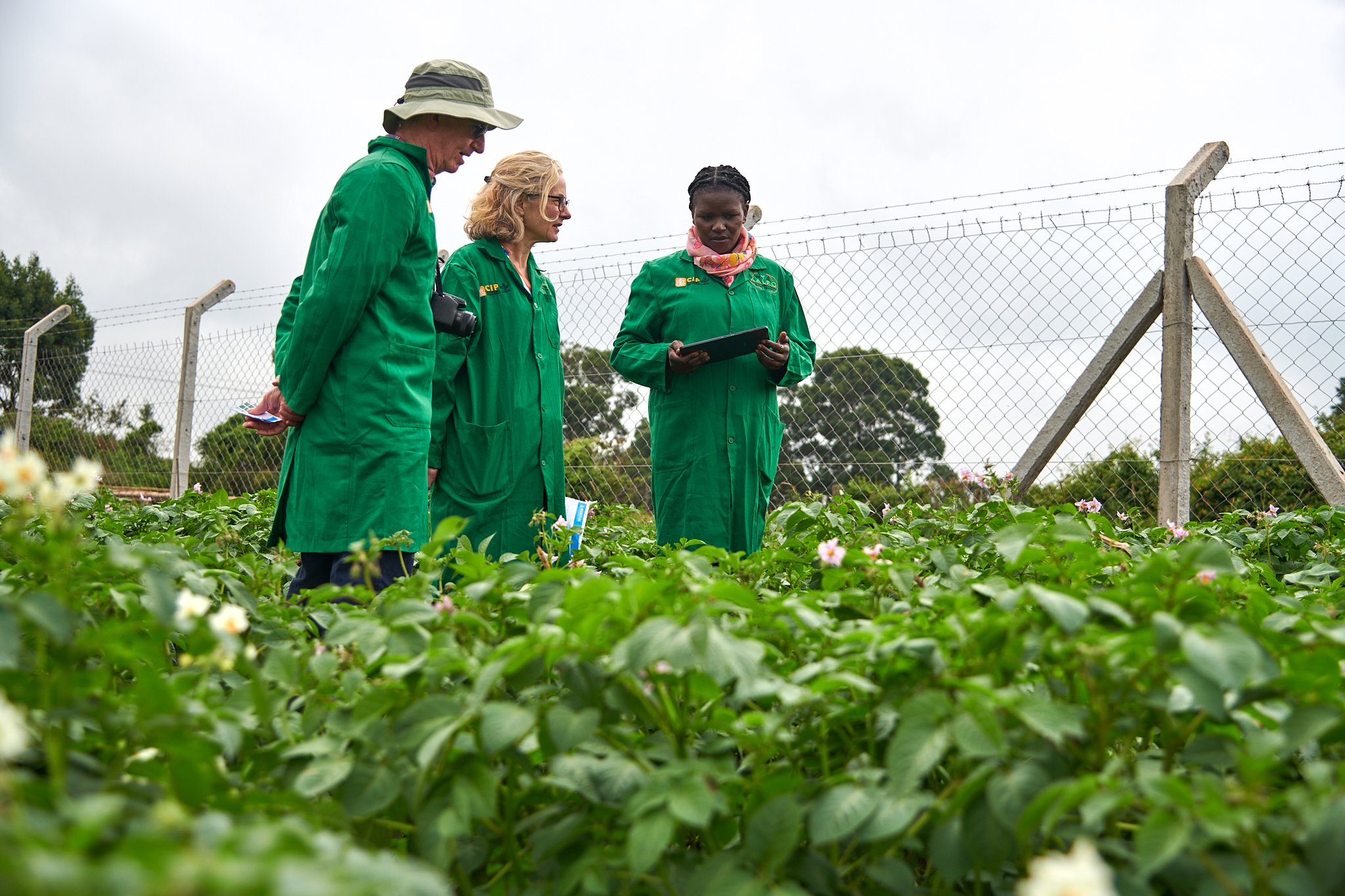
Potato
Late blight ranks among the most destructive crop diseases worldwide, affecting more than 3 million hectares of potato crops and playing a major role in the Irish Potato Famine, also referred to as the Great Famine. By stacking resistance genes from wild potato relatives into farmer-preferred East African varieties, this project has advanced field-validated late blight resistant potatoes for smallholder farmers in East Africa.
At a Glance
Crop(s): Potato
Global Production: 375 million tons
Disease: Late Blight, Phytophthora infestans
Region(s) Affected: Global
Loss/Costs: 3 million hectares of cultivated potato and losses of $10+ Billion/yr in the developing world alone
Collaborators: The Sainsbury Laboratory, International Potato Center (CIP), Global Biotech Potato Partnership
The Challenge
Late blight disease caused by Phytophthora infestans is one of the most destructive crop diseases globally, affecting more than 3 million hectares of cultivated potato and causing economic losses estimated at $10 billion per year in the developing world alone.
The potato produces nutritious food more quickly, on less land, and in harsher climates than any other major crop. It is therefore of major importance for smallholder and subsistence farmers in developing countries which produce over half of the world’s potatoes. However, control measures, such as fungicides or resistant varieties, may be unavailable or too expensive for smallholder farmers.
In Kenya and Uganda, where over 1 million smallholder farmers grow potatoes, losses due to late blight can be up to 70%, costing over $129 million per year in Uganda alone. Durable resistance can prevent these losses and help boost farmers’ food and economic security.
2Blades visiting the potato field trials in Kenya, 2023
The Strategy
Conventional breeding programs based on single resistance genes have seen resistant varieties overcome by P. infestans. Additional high level of resistance to late blight can be found in wild relatives of potato, however these species do not breed with cultivated varieties. The international Global Biotech Potato Partnership(GBPP) and preceding efforts have worked with the support of CGIAR and USAID to introduce a stack of three resistance genes from wild potato relatives into farmer-preferred East African varieties.
Following greenhouse tests that showed that these plants were highly resistant to late blight, the GBPP and partners at National Agricultural Research Organization (NARO) in Uganda and the Kenyan Agriculture and Livestock Research Organization (KALRO) in Kenya have grown these potatoes under field conditions. Multiple seasons of trials have now shown that the resistance performs well in the field, protecting yields without the use of fungicides. 2Blades has contributed funding support, technical advice, and additional resistance genes to this effort to achieve durable late blight resistance.
The Science
Late blight of potato is caused by the oomycete pathogen Phytophthora infestans. It is adapted to short-distance air dispersal and persists between crops mostly in infected tubers. Current management of late blight relies on a combination of cultivar selection (though no cultivar is resistant to all strains), good drainage, crop rotation, and frequent fungicide applications. However, it is not always practical or economical to deploy these methods – particularly for subsistence or smallholder farmers, and no method provides 100% protection. Creating durable resistance to late blight is a priority, and this strategy uses the natural genetic resources available in potato relatives.
Researchers have isolated and cloned several resistance genes against P. infestans from wild potato species. Three were introduced into susceptible Desiree and Victoria potatoes, which are farmer-preferred varieties in Uganda and Kenya. The genes encode members of the NLR class of resistance receptors, which confer resistance by recognizing different Phytophthora effector proteins. The triple stack of resistance genes makes it much more difficult for the pathogen to simultaneously adapt to and overcome this multi-layered defense.





